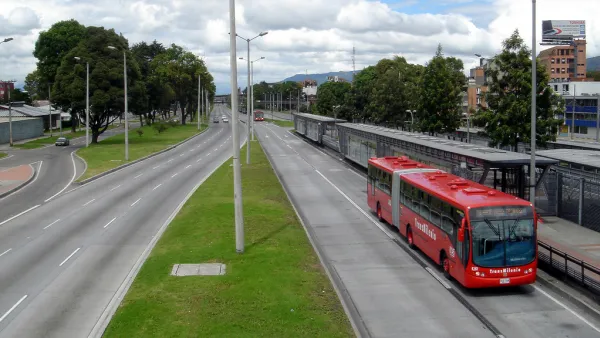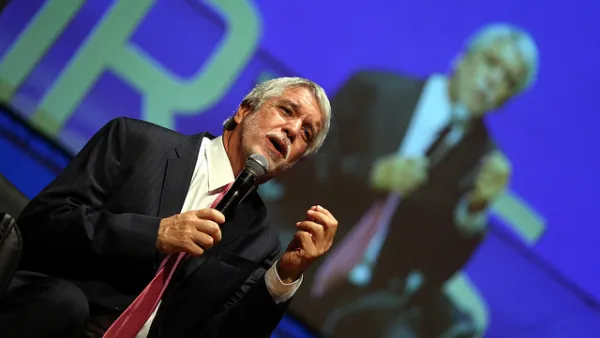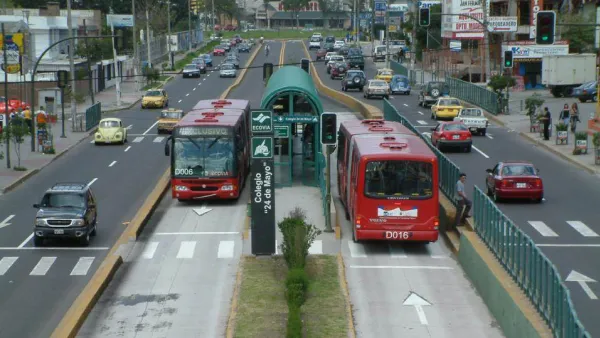It may not be sexy and it may not be fast, but the time has come to acknowledge the key role that the much maligned form of public transit will have in solving cities’ mobility woes, writes Will Doig.
Less expensive and easier to implement than rail-based mass transit, Doig looks to bus rapid transit as a system with the potential to revolutionize mobility in U.S. cities, as it has across the world, from Bogotá to Guangzhou.
According to Doig, "[m]aking people like the bus when not liking the bus is practically an American pastime essentially means making the bus act and feel more like a train. Trains show up roughly when they're supposed to. Buses take forever, then arrive two at a time. Trains boast better design, speed, shelters, schedules and easier-to-follow routes. When people say they don't like the bus but they do like the train, what they really mean is they like those perks the train offers. But there's no reason bus systems can't simply incorporate most of them."
Doig, with the assistance of transit consultant Jarrett Walker, offers some relatively easy fixes to vastly improve the image and functionality of bus systems anywhere, including increasing frequency, improving bus maps, enhancing predictability, upgrading bus stops, and raising the aesthetics of the buses themselves.
FULL STORY: It’s time to love the bus

National Parks Layoffs Will Cause Communities to Lose Billions
Thousands of essential park workers were laid off this week, just before the busy spring break season.

Retro-silient?: America’s First “Eco-burb,” The Woodlands Turns 50
A master-planned community north of Houston offers lessons on green infrastructure and resilient design, but falls short of its founder’s lofty affordability and walkability goals.

Delivering for America Plan Will Downgrade Mail Service in at Least 49.5 Percent of Zip Codes
Republican and Democrat lawmakers criticize the plan for its disproportionate negative impact on rural communities.

Test News Post 1
This is a summary

Test News Headline 46
Test for the image on the front page.

Balancing Bombs and Butterflies: How the National Guard Protects a Rare Species
The National Guard at Fort Indiantown Gap uses GIS technology and land management strategies to balance military training with conservation efforts, ensuring the survival of the rare eastern regal fritillary butterfly.
Urban Design for Planners 1: Software Tools
This six-course series explores essential urban design concepts using open source software and equips planners with the tools they need to participate fully in the urban design process.
Planning for Universal Design
Learn the tools for implementing Universal Design in planning regulations.
EMC Planning Group, Inc.
Planetizen
Planetizen
Mpact (formerly Rail~Volution)
Great Falls Development Authority, Inc.
HUDs Office of Policy Development and Research
NYU Wagner Graduate School of Public Service





























